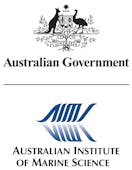
Australian Institute of Marine Science

The Australian Institute of Marine Science (AIMS) is a leader in tropical marine science.
The Institute is consistently ranked among the top one per cent of specialist research institutions internationally and is known for its unique capacity to investigate topics from broad-scale ecology to microbiology.
AIMS is committed to the protection and sustainable use of Australia’s marine resources. Its research programs support the management of tropical marine environments around the world, with a primary focus on the Great Barrier Reef World Heritage Area, the pristine Ningaloo Marine Park in Western Australia and northwest Australia.
Links
Displaying 1 - 20 of 35 articles

Around the world, coral reefs are suffering. But scientists in high-income nations are developing new ways to build coral resilience. We have a duty to share our skills and build capacity elsewhere.

O primeiro evento de branqueamento global ocorreu em 1998 e o quarto está em andamento. Até que reduzamos as emissões que provocam o aquecimento global, a pressão sobre os recifes de coral só vai aumentar

The first global bleaching event was in 1998 and the fourth is now under way. Until we curb the emissions driving global warming, the pressure on coral reefs will continue to increase.

We used to focus just on protection of vital ecosystems like the reef. But as climate change and other threats accelerate, we need to actively help nature get ready for the heat.

In recent years, the Barrier Reef has had a reprieve – and coral has regrown strongly. But now the reprieve looks to be over and the heat is back on

New research has unravelled the mystery of why sea sponges die when the water gets too warm. The cause of death appears to be the sudden loss of microbes that usually act to detoxify sponge tissue.

Coral in the Great Barrier Reef is once again bleaching, with water temperatures up to 3°C higher than normal in some places.

Australia’s ‘blue economy’ needs a strong basis in marine science.

The triple whammy of the moon’s wobble, sea level rise and more intense storms will bring worse tidal floods into coastal communities in the 2030s. This includes in Australia.

Traditional ecological and cultural wisdom was embraced and valued, enhancing Western scientific knowledge of a beautiful, fragile marine area.

Le génie génétique permet de s’intéresser à la biodiversité, et à comment mieux la préserver.

New research involving CRISPR technology has furthered our understanding of corals’ gene functions. Specifically, it has revealed a mechanism underpinning how corals withstand heat stress.

They’re more used to taking visitors to the reefs, but COVID-19 gave tour operators time to help check the condition of the corals. What they found doesn’t bode well.

Restoring the reef represents one of the most significant science and technology challenges in the history of nature conservation.

The findings will help determine the age of whale sharks, protecting the endangered animals into the future.

The Western Australian coral reefs may not be as well known as the Great Barrier Reef, but they’re just as large and diverse. And they too have been devastated by cyclones and coral bleaching.

Marine sponges are ancient organisms that have survived mass extinctions. Many are more tolerant of climate change and may dominate over corals in future reef systems.

Every year buoyant bundles rise from a spawning coral, giving the impression of an upside-down snowstorm.

Corals on the Great Barrier Reef that are tolerant to warmer waters can be used to help repair other parts of the reef damaged by recent coral bleaching events.

You can learn a lot about the movement of people and animals if you tap into the tracking data from many of today’s mobile phones.
